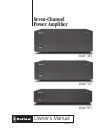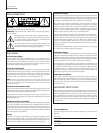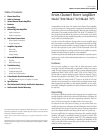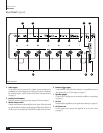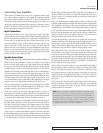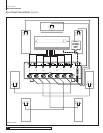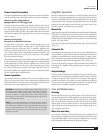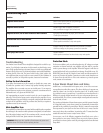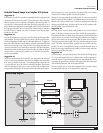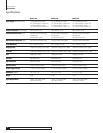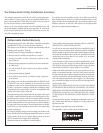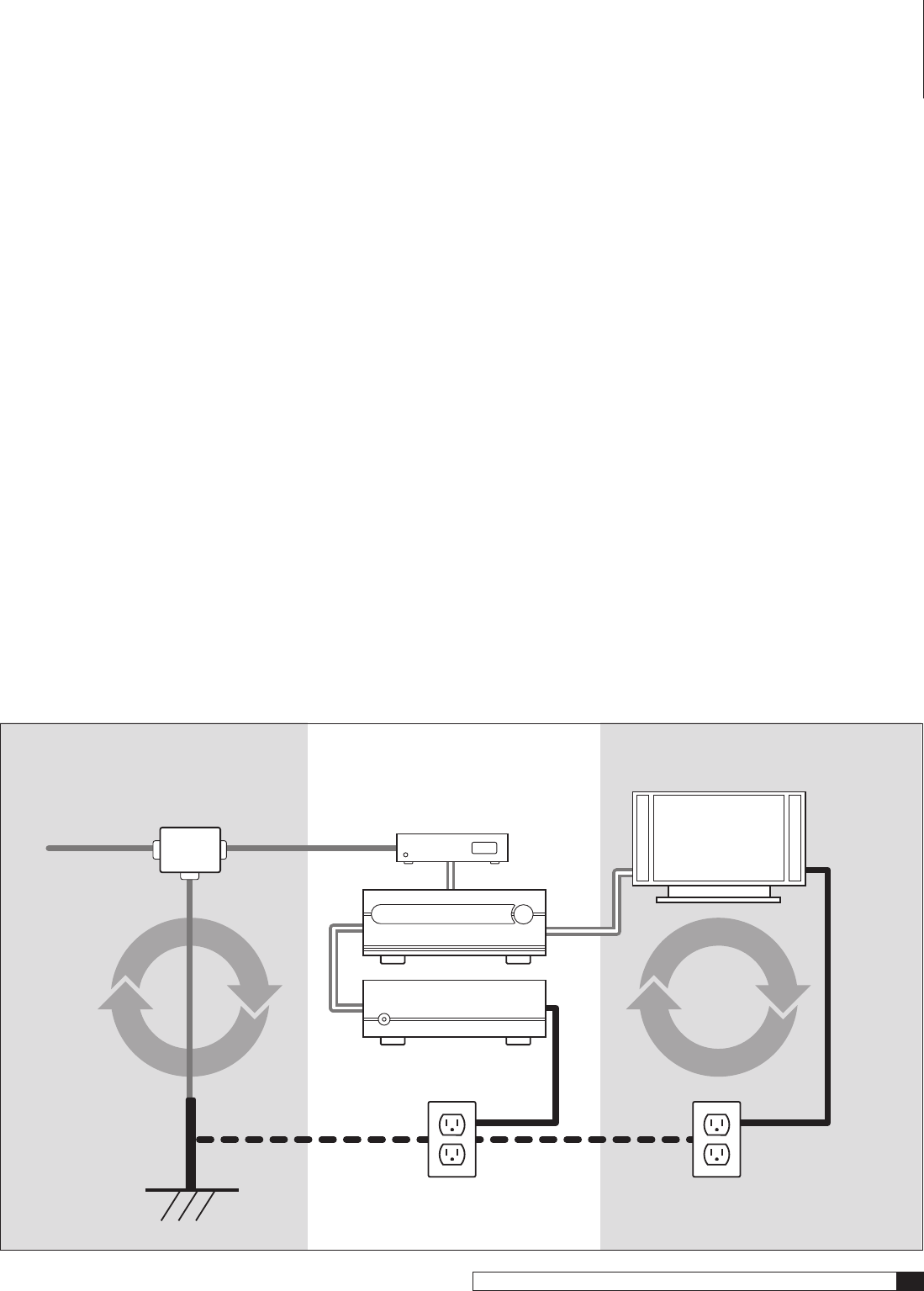
9
Seven-Channel Power Amplifier
Owner’s Manual
A Few Words About Hum and Noise
Potential Ground Loops in a Complex A/V System
Suggestion #1
To determine if a cable TV connection is responsible for the hum, first turn all
components off. Disconnect the cable TV feed to your system at the first place
where it connects to your components. Alternatively, disconnect the cable TV
wire where it is connected at the wall outlet. Turn your system back on, and
listen if the hum has disappeared. If removing the cable TV feed has eliminated
the hum, you will need to insert a Ground Loop Isolator before reconnecting
the cable TV feed, or contact your cable TV operator to see if they can better
isolate your cable feed.
Suggestion #2
Turn off all components in your system, and then disconnect the input cables
at the amplifier. Turn the amplifier back on, and see if the hum is still present.
If the hum disappears, the fault may be in the input cables used. Try replacing
them with cables that have better shielding, and make certain that the input
cables are not running on top of any AC power cords. Change the cables one
at a time to determine if one, or all cables is responsive. If the hum disappears
when the input cables are disconnected, but returns after the cables are changed
and the system re-connected, the problem may be caused by your processor,
receiver or preamplifier.
Suggestion #3
Ground loop problems may also be caused by poor grounding of the electrical
system in your home, particularly when there are multiple components with
three prong, grounded, power cords. Try unplugging these components one
at a time, and see if one or all of them is causing the problem. The ultimate
solution to this type of problem is to re-wire your house with an isolated, star
type grounding configuration. We recognize, however, that this may be imprac-
tical and expensive. In some cases, the use of an approved AC Power Isolation
Transformer of sufficient capacity may solve this problem.
Warning: if you suspect that the grounding system in your home’s electrical
wiring is causing the hum problem, it is important that you do not make any
changes to the wiring yourself. Only a licensed electrician should make any
changes to household wiring, and they must be made in full compliance with
all local building, safety and electrical codes.
Suggestion #4
Hum may also be caused by faulty earth grounds in your home’s electrical
system. In the past, cold water pipes were often used for the earth ground, so
it is important to make sure that your ground connection is still valid and has
not become loose or corroded. The cold water pipe method may no longer be
valid in some locations due to requirements that the water meter be isolated
from the water mains with a length of PVC pipe, thus interrupting the ground
circuit. The safest, and most reliable, approach may be to provide your own
ground. This can be accomplished by having a licensed electrician drive at
least five feet of copper-jacketed steel grounding rod into the earth, and using
that for your grounding connection.
Suggestion #5
If you have hum in your video display device (bars that roll up through image
at 12-14 second intervals), this may be related to hum you also experience in
your audio system. The previous suggestion tips may help with this also. If not,
try isolating the ground in the projectors video signal cable with a base-band
video isolation transformer, such as the Jensen VB-1BB.
If the hum persists after all of the above suggestions have been tried, contact
the Outlaw Audio customer service department for assistance.
60Hz AC
Ground Loop
60Hz AC
Ground Loop
AC Ground
AC Line
A/V
Cables
Main House
Grounding
Cable Feed
Coax Cable
Ground Loop Diagram
AC Line
Set-top Box



